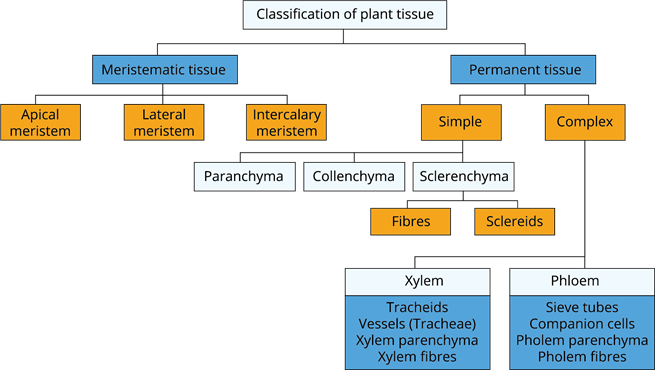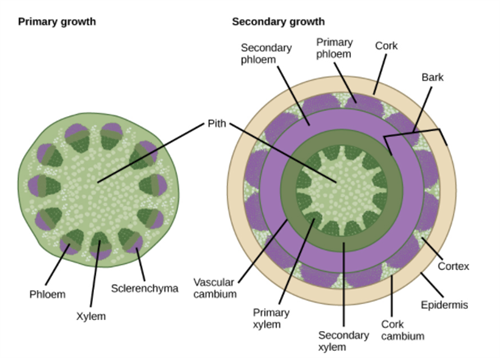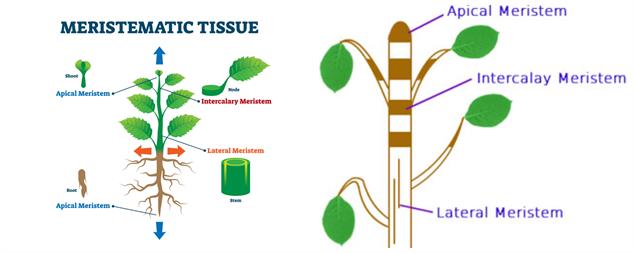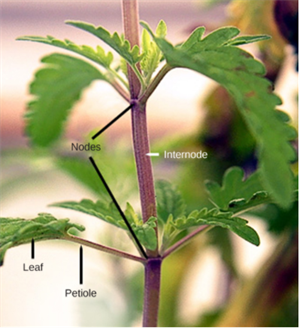PDF chapter test TRY NOW
Plant tissues are classified into
1. Meristematic tissue
2. Permanent tissue

Classification of plant tissue
Have you noticed the growth of plants? How do they grow into very large trees? How could a small plant increases its length and width so much? This growing characteristic is specific to plants because of a special type of tissue called meristematic tissue. This tissue always keeps dividing into other tissues and is responsible for the plants' growth in its length and width of the plants.
Meristematic tissue
a. C. Nageli coined the term meristem in \(1858\).
b. It was derived from the Greek word 'Meristos' means divisible.
c. The tissues in which cells always keep dividing giving rise to new cells are called meristematic tissues.
d. These tissues are responsible for the growth of plants. Plants grow only in those regions where meristematic tissues are present.
Meristematic tissue is also called as growing tissue. Based on origin, meristems are of two types, viz., primary meristem and secondary meristem.
Primary meristem: Primary meristem are produced from promeristem, which further divide to form different tissues. Primary meristems are the birth place of primary permanent tissues increasing the plant's length and width, E.g. Apical meristem.
Location: It is located at the tips of the roots and stems, base of the node and internode or leaf.
Secondary meristem: Secondary meristems are not formed during the early stages of differentiation. It develops from primary permanent tissue later by de-differentiation. Through this process, secondary meristems form permanent secondary tissue for secondary growth (increases only in width).
Location: It is located at the cork-cambium, cambium of roots and inter fascicular cambium of stem.

Primary and secondary growth in stems
In woody plants, primary growth is followed by secondary growth, which allows the plant stem to increase in thickness or girth. Secondary vascular tissue is added as the plant grows, as well as a cork layer. The bark of a tree extends from the vascular cambium to the epidermis.
Characteristic features of meristematic cells
- In meristematic tissues, the cells are very active, immature, non-vascular, contain dense cytoplasm, large nucleus and thin cell wall made up of cellulose.
- They lack vacuoles because vacuoles are full of cell sap and provide turgidity and rigidity to the cell.
- The new cells generated by meristem are initially like those of pre-existing meristem. After maturation, their characteristic features started to change and becomes a permanent tissue.
Meristematic tissues are classified based on their position in the plant body. i.e. Apical meristem, intercalary meristem and lateral meristem.

Types of meristematic tissue
Apical meristem
Location: It is located at the growing tips of the stem and roots of vascular plants.
Function: It helps to increase the length of the stem and the roots. It acts as the promeristm having actively dividing cells giving rise to other new meristems.
Intercalary meristem
Location: It is located at the base of inter-nodes, between the places at which the leaves attach, i.e., at leaf bases.
Function: Their primary function is to provide elongation (longitudinal growth) and growth of part of the plant where they are present.

Stem showing internode, nodes and leaf petioles
Leaves are attached to the plant stem at areas called nodes. An internode is the stem region between two nodes. The petiole is the stalk connecting the leaf to the stem. The leaves just above the nodes arose from axillary buds.
Lateral meristem (Cambium)
Location: It is located at the lateral sides of stems and roots.
Function: It increases the girth of stem and root (circumference of the stem and root).
Reference:
https://www.flickr.com/photos/144872528@N06/29379783425/in/photostream/
https://openstax.org/books/biology/pages/30-2-stems
